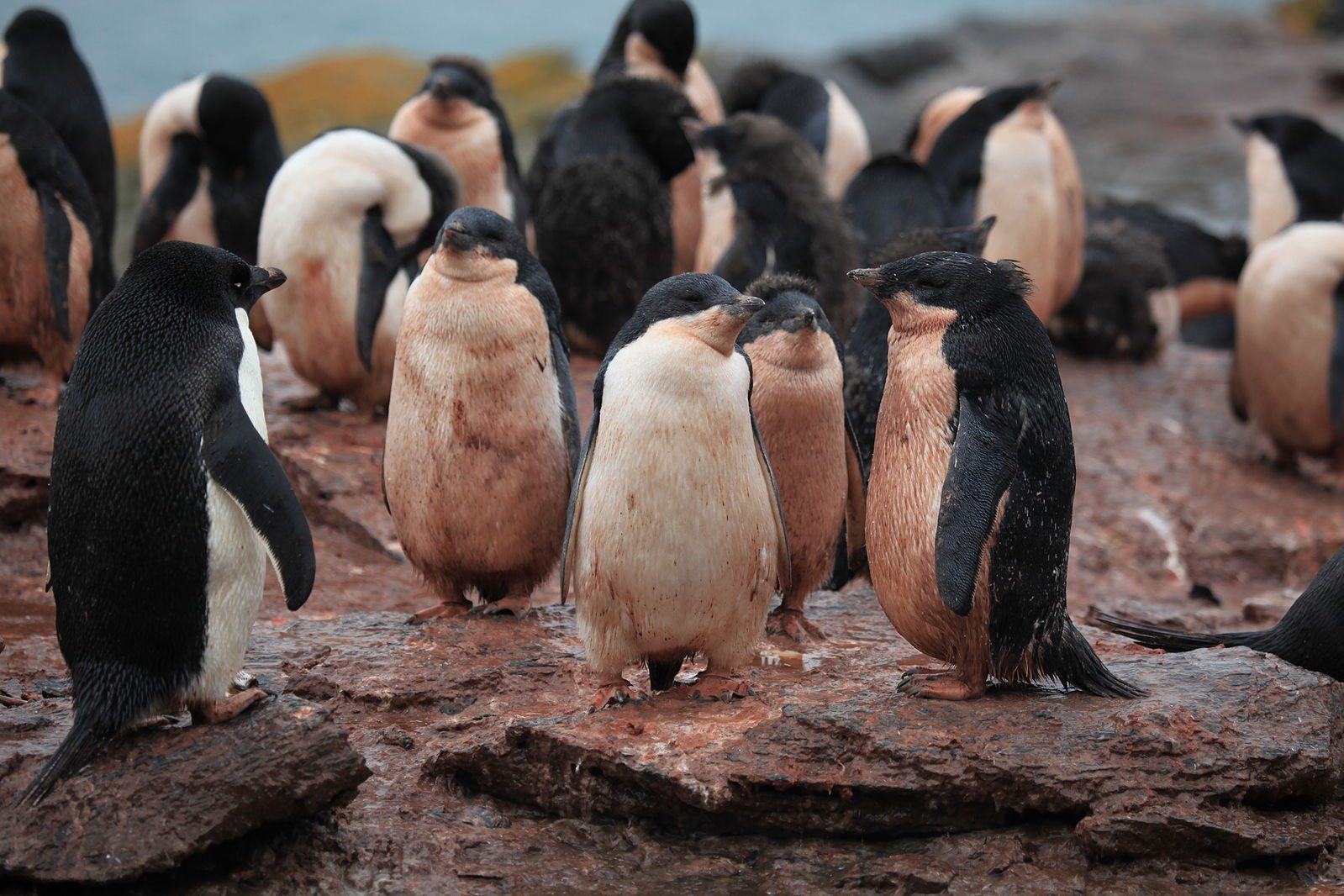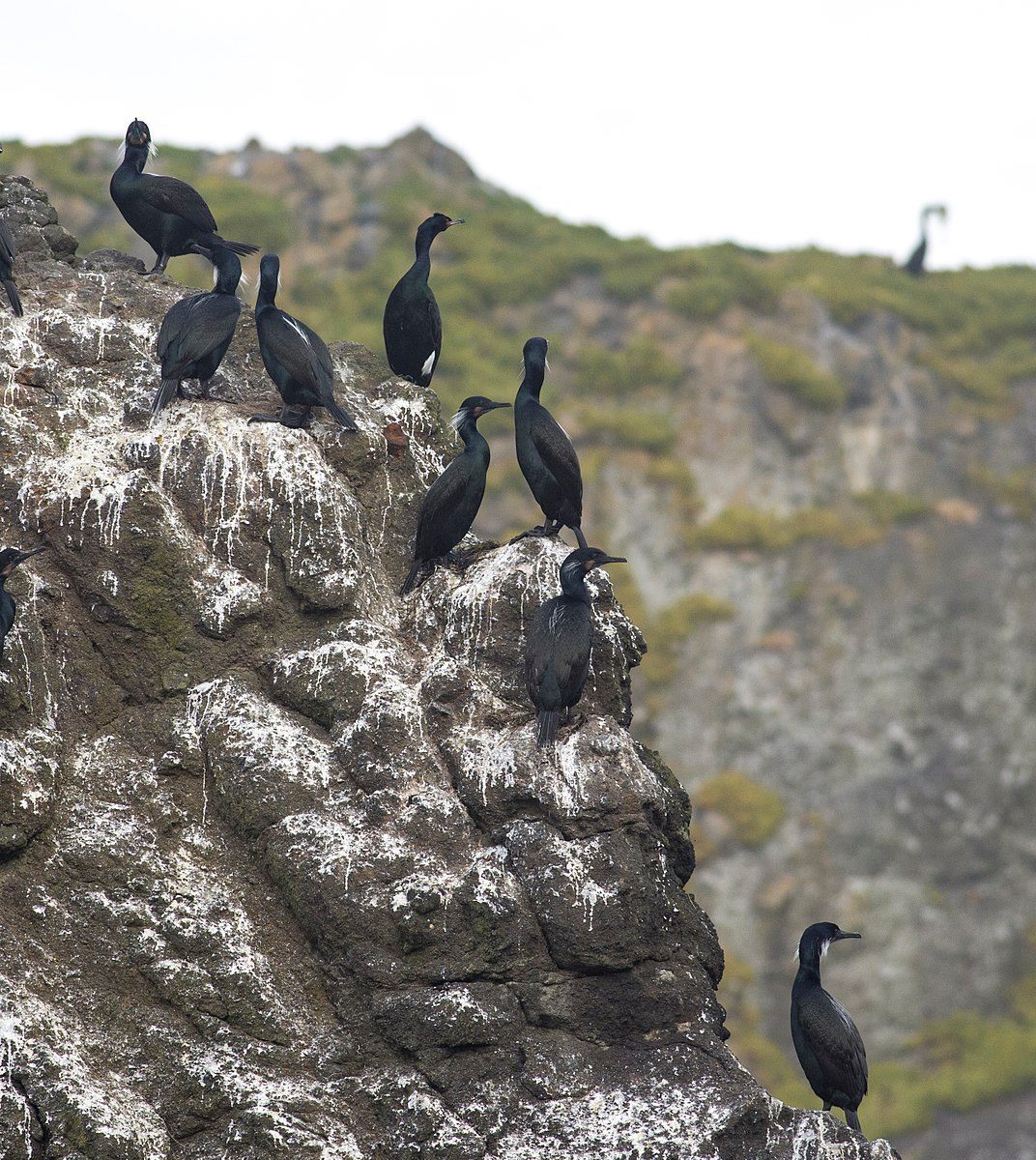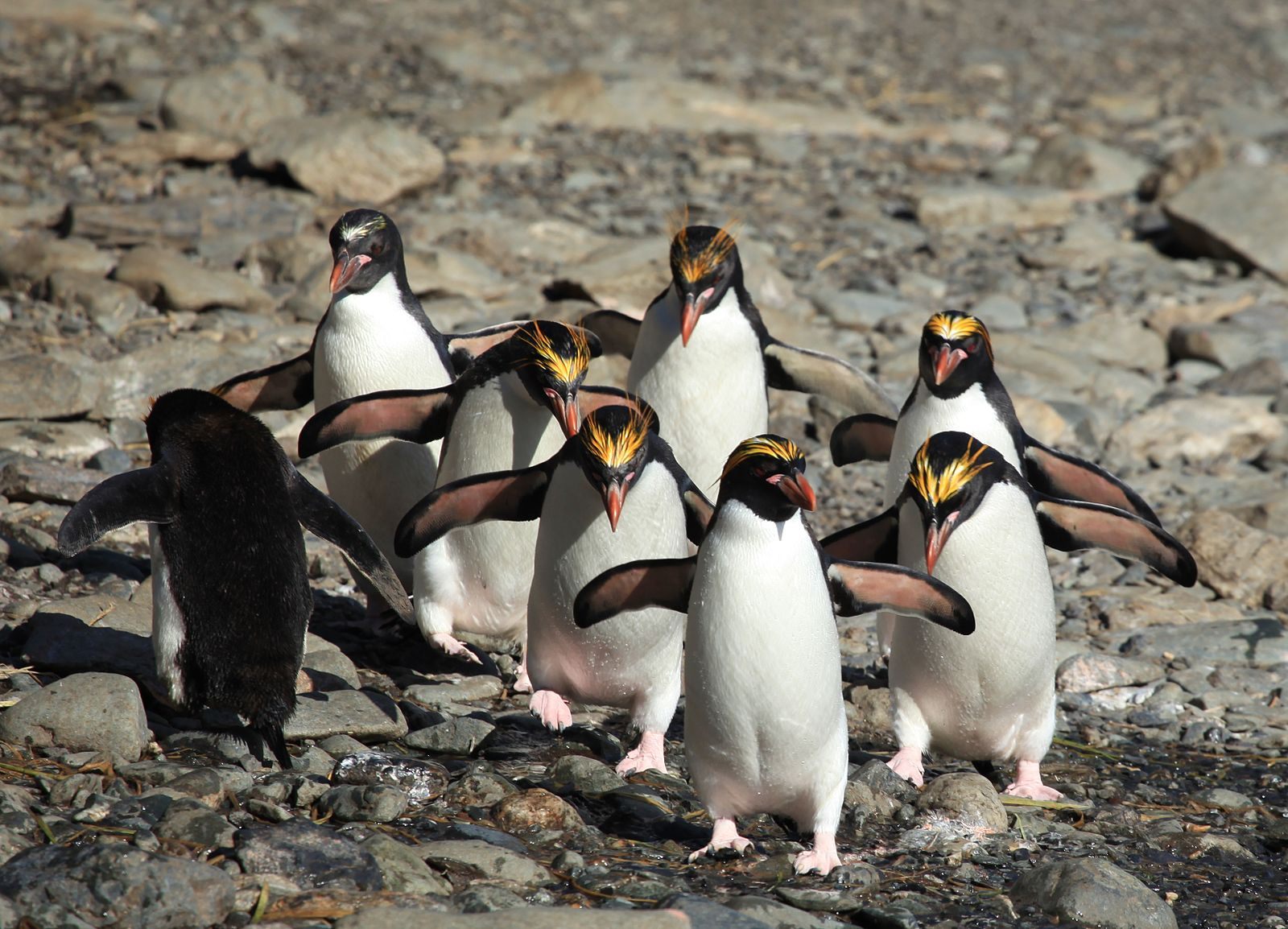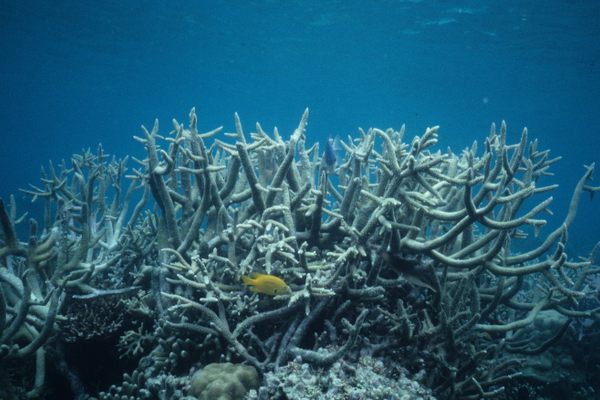Measuring the Significance of Seabird Poop
By quantifying guano, scientists hope to learn more about nutrient cycles.

Anyone who has watched a flock of gulls throw a party on a rock knows that they can make a whole lot of guano. For centuries, professionally interested parties have noticed this too. In 1609, the explorer Garcilaso del la Vega wrote of coming across mounds of bird poo in Peru that were so large, they looked like “the snowy crests of a range of mountains.” (Incan farmers used the heaps for fertilizer, a trick the Europeans eventually picked up on, spurring an era of guano imperialism.) And ecologists from Scotland to British Columbia have chronicled the effects seabirds and their droppings can have on local plant communities.
But until recently, no one had tried to measure these poopy contributions on a broader scale. In a new paper in Nature Communications, a research team digs into an important question: How much nitrogen and phosphorus do seabirds add to global nutrient cycles? Because the fixed forms of both of these chemical elements must exist within certain ranges in order to best support balanced ecosystems, their movements and amounts are of great concern to scientists. “Before, the studies that were made on [seabird nutrient excrement] were mostly of very regional interest,” says Miguel Angel Huerta-Diaz, a co-author of the study. “In this article, we analyzed the implications at the global level.”


The team built off the work of another research group, which made a similar assessment of seabird nitrogen production in 2012. That group developed a bioenergetic equation that enabled them to plug in known quantities—such as seabird size, food preferences, and time spent breeding—and squirt out an estimate of nitrogen produced. This team tweaked the equation so that it would work for phosphorus, and did more nitrogen calculations with updated population numbers. They also investigated the proportion of both excretions that comes out in a bioavailable form: that is, a form that is able to be easily leached into the ocean, and thus added to the cycle.
“Our research was restricted to the breeding season, because that’s when they get together,” says Huerta-Diaz. Still, the team came up with some big numbers. All seabirds combined, they calculated, produce approximately 99 billion grams of phosphorus per year, along with 591 billion grams of nitrogen. About 13 percent of this phosphorus and 21 percent of this nitrogen is bioavailable. While these numbers are dwarfed by other contributors—such as the phosphorus released by weathering rocks, or the nitrogen fixed by bean farming—they are comparable to others that researchers tend to include when calculating global nutrient cycles. For example, Huerta-Diaz points out, seabirds transfer about as much nitrogen and phosphorus from the ocean to the land as commercial fishers do.

Along the way, the team was also able to nail down some important individual stats. At the species level, the poop king is the Macaroni penguin, which contributes nearly 20 percent of the total nitrogen and phosphorus excreted by all seabirds. (“They’re huge,” explains Huerta-Diaz.) King penguins aren’t far behind, and penguins as a whole have an outsized presence on the top poopers chart. Heavy hitters that are not penguins include the Northern Fulmar, the Common Guillemot, the Short-Tailed Shearwater, and the Thick-billed Murre.
Why drop everything for droppings? “There are several implications of this work,” says Huerta-Diaz. One of them has to do with the aforementioned models: If we are trying to keep tabs on biogeochemical cycles, and we leave out the guano, we might not get a complete picture. “Models that contemplate, for example, studies of climate change may introduce these new facts,” he says.
He also thinks we should keep it in mind when thinking about how much we value seabirds, pesty as some may be. “Seabirds are important sources of nitrogen and phosphorus,” he says. “We think that this may have implications in terms of preservation of these seabirds.”
As the study is still new, he continues, “we haven’t had time to digest everything.” When they do—as the seabirds have taught us—more conclusions will surely follow.















Follow us on Twitter to get the latest on the world's hidden wonders.
Like us on Facebook to get the latest on the world's hidden wonders.
Follow us on Twitter Like us on Facebook